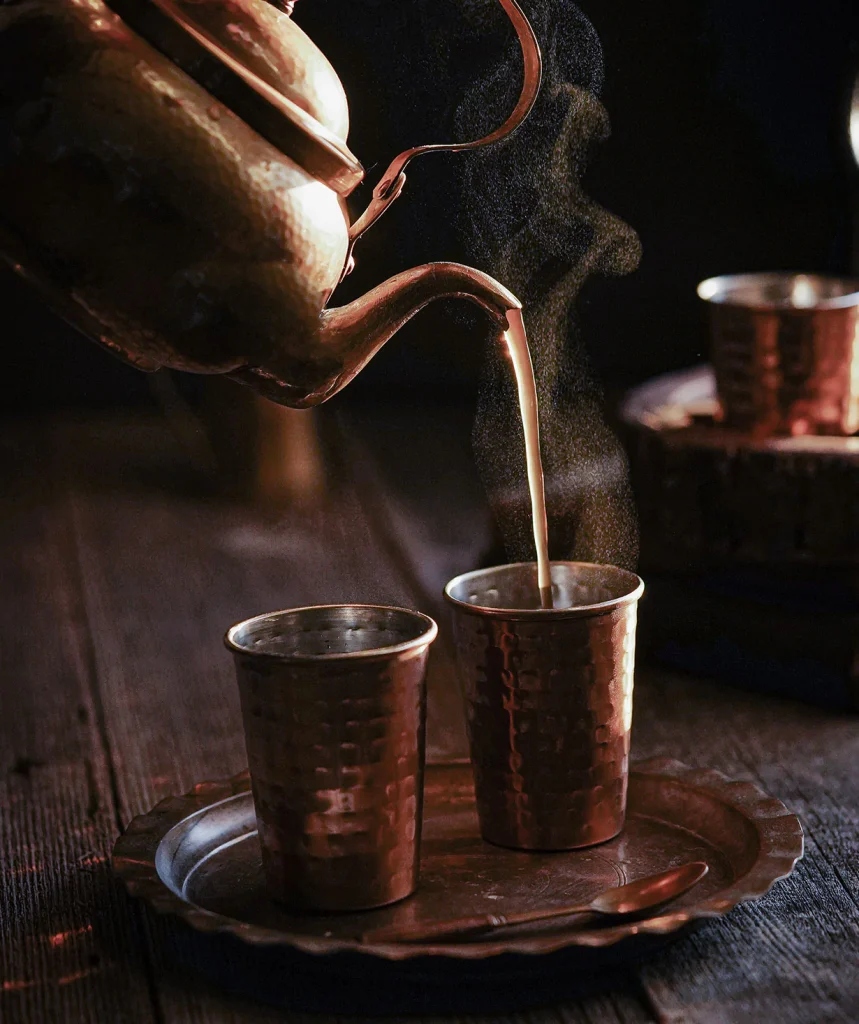Let’s prepare a cup of life!

Being a tea-lover, nothing can define life more accurately to me, than a cup of hot tea. Don’t you just feel like making one now!
The tea in its process of being made, already stimulates your olfactory nerves. After being poured into the cup, it kind of teases you with a few bubbles, you get tempted to drink it but oh! It’s hot..
U wait for a little while, gulping in the water that continuously fills your mouth.
Finally you take in that sip…that one sip feels like life!
You just gulped in another reason for breathing tomorrow and that satisfactory sigh you give out just speaks on your behalf. You feel the energy to deal with the world and its stupidity again. You want to live for another day, so that tomorrow again you can have this amazing experience of meeting life in such a delicious mannar.
Let's become a little grateful to the ones who brought us this delight!
This tea which gave you such a close meaning of life deserves mention. We need to really start giving it the credit it deserves! But you may think, how may I do so? No! You don’t have to say thank you to yourself for preparing it, but you need to know who actually deserves the credit!
Let’s go through the process of tea cultivation, processing,manufacturing and marketing..all the processes which ultimately lead to your perfect tea-time!
Tea Cultivation
It all starts here.
There are two main varieties of tea plant: the small-leafed China plant and the large-leafed Assam variety. The best tea is produced in regions that have dry days and cool nights, good amounts of rain, and an altitude of 2000 to 7000 feet in the tropics (lower elevations in temperate regions). The best flavour in tea is brought about by inducing some stress during the growth period but this reduces the yield per hectare of the plantation.
Tea bushes are pruned regularly to about one meter in height to facilitate their plucking. The bushes produce a white flower and a hazelnut-size fruit which are not allowed to develop as we need the leaves. Their oil produces the tea flavour. Tea requires year round maintenance, including trimming and seasonal pickings, in order to maintain their height. The waist-high bushes at a typical tea plantation can often be 25 to 90 years old.
Tea Agriculture
Tea is harvested on plantations called “estates” or “gardens” which have ski-tow-like ropeways and chutes, for carrying leaves to the processor. The tea industry is a labor-intensive business. Plucking and drying the leaves are some of their most important tasks.
Tea bushes are grown from cuttings or seeds and usually take about four years to mature. When they reach an age of six to 18 months, they are planted in a plantation. When they get a little bigger, they are replanted into their permanent spot in a row at the plantation about four feet apart. About 3,000 plants grow in hectares of land.
Tea grows best on sloping terrain. Plants growing in lower regions are ready to harvest after three years whereas those growing in higher regions are ready to harvest after five years.
Tea Harvesting
Tea is almost exclusively hand picked, that too with utmost care, making sure that the leaves are neither too big, nor too small.
The tea pickers pluck new and tender “flush” which appear every seven or eight days. The buds near the end of a branch are considered to be the best quality whereas the ones that are found further down the branch,are said to be of lower quality. There are baskets, strapped onto the heads and backs of the pickers, into which these flushes are put.
Around 72 kilograms of leaves are plucked by a picker per day, from which about 18 kilograms of finished tea is made. Fresh leaves weigh about twice as much as dried tea leaves. Skill and experience are needed to accurately judge their condition, making it difficult to produce a high quality tea.
Tea Processing
Most tea is processed in large multi-storied buildings. The tea is often brought in by trucks, followed by their movement into the factory on conveyor belts. A factory may process around 20,000 kilograms of leaves a day which yields 5,000 kilograms of tea. The final product is placed in large bags that are moved by truck, train or ship.
Green tea is put in a “steamer” and heated immediately after it is picked for softening the tea for rolling, as it is not fermented. Leaves that are made into black tea are “withered” (de-moisturized by blowing air through them) in a withering machine which removes moisture while leaving the leaves soft and pliable.
The tea is then rolled in special machinery instead of crushing, in order to maintain their aroma and flavours. After rolling the tea, it is fermented by placing it in a cool, moist room to accelerate oxidation. The length of their fermentation process determines the level of oxidation that takes place and in turn determines whether the tea is green, black or oolong or another variety.
During the next stage the tea is dried or “fired” for 15 to 25 minutes. The key to producing good tea is stopping fermentation at precisely the right time. Finally, the “made tea” is sorted and rated into commercial grades, for making it ready for shipment. The grades are determined both by size and quality.




